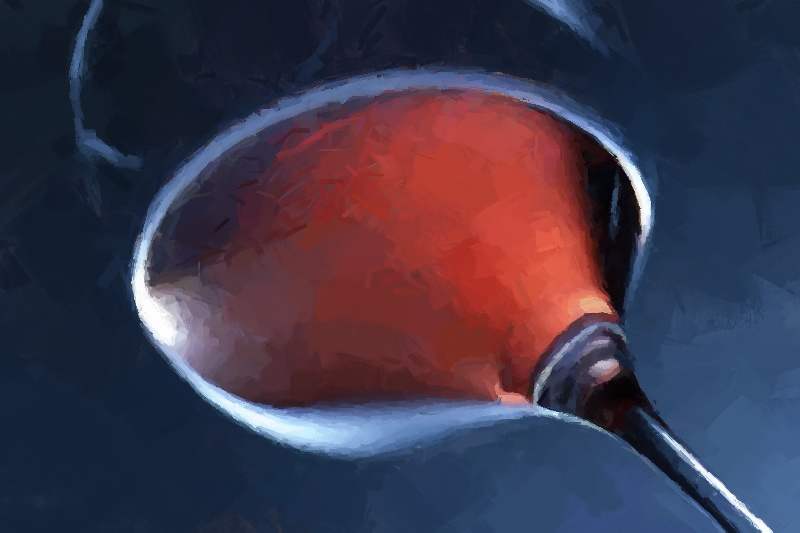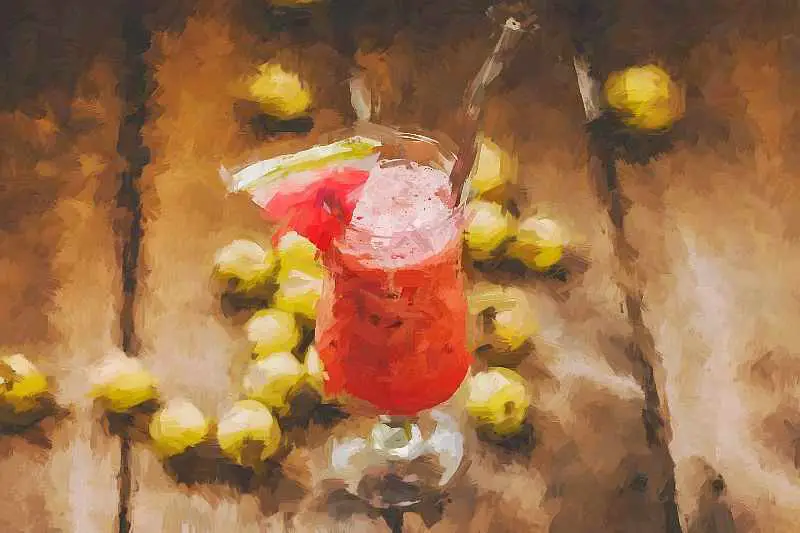Easily Increase Alcohol Content Of ANY Fermented Beverage
Increasing the alcohol content (abv) of fermented drinks is actually quite easy. All you need to do is add SUGAR and play with YEAST and TIME.
Every time I browse one of the many fermentation groups I am part of, I can’t help but noticing that one specific question is usually asked more than any other.
How can I increase the alcohol content ( abv ) of my fermented drink?
Now, I am not trying to imply that my fellow fermies are all alcohol heads, but, really, with all its many variations and tweaks this question dwarfs them all!
Be it water kefir, hard kombucha, fruit wine or apple cider, this seems to be the issue fermenters worldwide are more concerned about.
At least in my experience.
But who am I to judge, right?
TELL YOUR FRIENDS
Especially because we too like to enjoy a full bodied glass of wine or beer every so often.
So we thought it could be useful to you if we shared what we learnt along the years, what we know and what we do.
And more so the steps we always take when we decide to brew a moderately alcoholic drink.
I should specify that by moderately alcoholic I mean a maximum abv of 14-15%; an alcohol content also typical many high quality grape wines.
It is also important to specify that when we talk about alcohol the ONLY ONE we want to produce and consume is ethanol.
So from now on, in this tutorial, when you read alcohol I always refer to ethanol.
Alcohol is produced during fermentation
If you are new to the world of fermented drinks and have zero idea about how alcohol is formed, here is a one sentence explanation to get you started.
During the fermentation process microorganisms, namely yeasts, consume sugars and excrete alcohol and CO2 as by products
That’s all.
P.S. Here is a very articulated and scientific explanation for a more in depth understanding.
So, alcohol is formed during fermentation and during fermentation only, which means that, in Nature, there are no other ways of producing it.
And if you are there asking yourself…wait a minute…
Doesn’t distillation make alcohol?
If we give a quick look at the definition of the world distillation we find the following
- The evaporation and subsequent collection of a liquid by condensation as a means of purification.
- The extraction of the volatile components of a mixture by the condensation and collection of the vapours that are produced as the mixture is heated.
And it becomes pretty evident that distillation DOES NOT produce alcohol nor increases the alcohol content of a given liquid.
It is just a technique used to extract the alcohol already present inside a solution, by separating it from the aqueous part.
As a consequence, the alcohol percentage ( abv ) of the final drink, usually spirits or liqueurs, is much higher than the initial one.
Conversely, under a quantity perspective, any distilled drink will be but a fraction of the starting one.
Tu sum it up
Fermentation creates alcohol, distillation concentrates it.
Would You Like
YOUR FERMIE LIFE
To Be EASIER?
Our FERMENTATION
PRINTABLES Will Do
Exactly That.
How to make an alcoholic fermented drink
Producing alcohol naturally, is exactly what fungal ( yeast ) fermentation is about.
In fact any fermented drink, including home made, contains a certain amount of alcohol, albeit negligible in the majority of cases.
So how much alcohol can you really make via fermentation?
Let’s find out.
In fermented drinks like Tepache, Ginger Beer or Beetroot Kvass, to name few, the ethanol content of the final product usually ranges between 0.5 to 1.5% (abv)
To give you an idea of how small this amount is, know that some types of fruit, if consumed very ripe or overripe, contain more.
So, clearly, producing a relatively small amount of ethanol via fermentation is not just easy, it’s a Nature inbuilt feature, so to speak.
A little more difficult, or articulated I should say, is to obtain a higher alcohol content than fruits can naturally produce.
In order to do that we need to adjust the 3 fundamentals of ethanol making and change them accordingly to our desired results.
Join Our Community
The three fundamentals of alcohol making
That’s right.
If we know what to change and how to change it, we can take ANY drink we plan to brew and turn it into a more adult version of itself.
A version that contains enough alcohol to compare and stand up to any store bought beer or wine.
There are 3 players in our fermentation field
- Sugar
- Yeasts ( microorganisms )
- Time
But if we wanted to be very precise we would add a fourth one: an airtight environment.
Interestingly, just like everything else ruled by Mother Nature, there are no secondary or marginal players in our brewing field.
All 4 of them in fact have an equally important role and are equally fundamental for the desired result.
So let’s start with the first one.
1. Sugar
When we talk about sugar in the context of fermentation we refer to the sugar naturally present in fruits ( or vegetables ), mainly fructose, and the one we add to the brew, usually sucrose.
The amount of sugar contained in the solution is what determines the amount of alcohol in the final product.
In other words: you can throw a whole bag of yeast in the brew and let it ferment for a month but if the sugar content is too low, you will end up with virtually zero alcohol.
And, most likely, with something that tastes very bad.
So, sugar it is then.
Sugar provided by fruit
As a baseline it is paramount to be aware of the amount of sugar contained in the fruit, or vegetable, one is going to ferment.
Furthermore, for the purpose of producing an alcoholic drink, it is recommended to use ripe or very ripe produce.
Such produce, in fact, has a much a higher fructose concentration when compared to less ripe or green.
To not overcomplicate things let’s say that knowing the average content of the specific fruit or vegetable variety will be enough to complete the task.
Golden delicious apples, comice pears, black carrots carrots and so on.
But, if precision is what you are after, I suggest you provide yourself with a hydrometer or a refractometer.
Both of them will give you a precise reading of the sugar content and the expected alcohol percentage of the final brew.
Be mindful of water
Something we always need keep into consideration for our ( upcoming ) calculations is water.
To be able to work with fruits or vegetables that do not contain much juice, we inevitably need to add a certain amount of water.
It goes without saying that every time we add water to a solution we dilute it therefore reducing its overall sugar concentration.
IMPORTANT: If you own a hydrometer or a refractomer take your measurements AFTER water has been added, not before.
If, instead, you go by average sugar contents mathematics will come to the rescue.
Proceed like this.
Warning: if the thought of numbers alone makes your eyes cross avoid all headaches and use only very juicy fruit or vegetables! ( and skip the next few lines )
THE MATH
Calculating the sugar content ( in grams ) of the produce:
( Produce weight * sugar content ) / 100 = total sugar in your fruit
Adding water:
Produce weight + Water weight = Total weight of the solution
Now, to find out the sugar concentration of the new solution, we need to solve a proportion:
Total weight of the solution : total sugar in the fruit = 100 : X
The resulting number is the percentage of sugar contained in the solution.
But let’s simplify things with a real life example.
Let’s say you are working with 1500 grams of not so juicy pears and that you’ll need to add some water to them.
On average pears contain 9.5 grams of sugar per 100 grams of produce.
So to find out the total amount of sugar:
( 1500gr x 9.5gr ) / 100 = 142.5 gr
142.5 grams is the amount of sugar contained in the pear juice.
Now let’s say we need to add 500 ml of water.
With the introduction of water we have diluted our solution and therefore need to find out what the new sugar concentration is.
As per above
1500gr + 500ml = 2000gr
Where 2000 grams is the total weight of the solution.
Now with the proportion used above we can calculate the sugar percentage:
2000gr : 142.5gr = 100 : X
> 142.5gr * 100 = 14250gr
> 14250gr / 2000gr = 7.12
The NEW sugar concentration is 7.12%
Knowing this number is fundamental for the next steps.
Sugar added by us
Let’s get the most important thing out of the way immediately.
Hardly any fruit on the planet is as perfect as grapes when it comes to brew a fermented drink.
Inside every little grape, sugars and liquids are so perfectly balanced that virtually zero external intervention is needed.
They literally are every fermenter’s dream and it’s not a coincidence that they have been so for millennia.
But what does that mean for us trying to make some alcoholic drinks?
It means that unless we intend to brew from undiluted grape juice, aka make wine, we will have to manually intervene and adjust the sugar content of the initial solution.
The second important thing we need to know to proceed with our projects is how much sugar grapes contain.
That percentage will become our reference point and the concentration we will work to recreate.
On average, I am specifically referring to European varieties here, such sugar content is around 16%.
Meaning that 100 grams of fruit contain 16 grams of fructose.
Why is this number important?
Once you know this number you will also know how much sugar to add to your brew to increase its alcohol content.
Very simply.
Wine made with grapes can reach important alcohol concentrations of around 14% – 15%.
How do we proceed, then, if our starting pear juice + water solution has a sugar concentration of 7%, like in the example above?
We just add enough sugar to bring the concentration up to 16%.
In our case, an extra 9% of the weight of the solution
That’s it.
Now let’s do a quick recap by summing up these first steps:
- Write down the average sugar content of the produce you work with
- Weigh the fruit ( or vegetable ) juice
- If you need add water
- Calculate the new sugar concentration
- Add extra sugar to reach a 15-16% solution
2. Yeasts
If you have browsed around the blog you already know we are big fans of wild fermentation and in fact that’s the technique we generally use for our alcoholic drinks too.
But, in all truth and honesty, if you are at the beginning of your fermentation journey using high quality wine yeasts could turn out to be an easier and smoother road.
Let’s see why.
Wild yeasts
As we have explained in different occasions, wild yeasts, just as the name suggests, are “random” yeasts that live just about everywhere around us.
Including in and on fruits and vegetables of course.
I realise that “random” might sound a bit like an unorthodox definition, and in some ways it is, but there is a reason for it.
It highlights very well the number one characteristic, and downside, of wild yeasts.
Unpredictability.
There simply isn’t a way to know in advance which types of microorganisms will end up inside our fermented drink.
This is why a starter, a yeast-water or a bug, as many call it, are usually prepared a few days ahead to test the quality of the yeasts, prior to using them for a bigger brew.
If the starter smells good ans tastes good it usually means that one or more good strains of fungi have been isolated.
On the other hand, off smells and bad flavours, are symptomatic of the exact opposite.
The second most important characteristics of wild yeasts is their sensitivity to alcohol.
You read that right.
I know it sounds counter intuitive but natural yeasts tend not to survive in liquids that contain a high amount of alcohol.
And by high amount of alcohol I mean above 10%, sometimes less, sometimes more.
Once again, whether natural yeasts will survive above that ENTIRELY depends on the strains we have isolated.
After all, in Nature, nobody really needs liquids with high abv, right?
Yeasts are supposed to die after completing their fermentation and pass the baton to other microorganisms, acetic bacteria, that will acidify the liquid and transform it into vinegar.
Characteristics number three is that natural yeasts might not be as efficient at consuming sugars as we think.
In fermentation it is a well known fact that not all sugar are transformed in alcohol and that not all alcohol is transformed in acetic acid.
And, for the third time, how much sugar will become alcohol depends on the wild strains we have captured.
Did I mention natural yeasts are unpredictable?
I did, didn’t I?
Commercial yeasts
Commercial yeast, also known as super yeast or super Cerevisiae, as it’s made up of living microorganisms but it’s certainly not wild.
Such fungi are in fact grown in laboratories, do not live anywhere around us and must therefore be purchased.
Furthermore they are “bred” and heavily selected, engineered even, in order to achieve specific results.
Champagne yeasts, for example, are selected to produce more bubbles and increase spumeggio.
Some others to perform well in wines meant for ageing and so on.
Commercial yeast is build to deliver; it delivers well and it does so with a percentage very close to 100%.
It is also very reliable.
For all the above reasons this is the route that, in our view, all beginners should take.
It is also the route to take if your goal is to brew a high abv drink or have the intention to use the fermented product for distillation purposes.
Or both.
Truth be told, if the fermented drink is brewed to then be distilled, the use of commercial yeast is more than just recommended.
3. Time
Last but not least, the third key element for fermenting drinks with a high(er) alcohol content is time.
When you brew a batch of bread kvass, smreka or elderflower fizz, you know that, to achieve the desired result, those drinks will only need a very short fermentation.
And, because of that, you will also use a quite minimal amount of sugar.
On the other hand, every time we plan to ferment an alcoholic drink, we need to adjust the fermentation time accordingly.
How long should I ferment an alcoholic drink for?
You might ask.
And the most honest answer is: THE DRINK will tell you.
Yes, sure, we can approximate or have a rough idea, especially if we use commercial yeast, but fermentation, as you might have learned already, is never an exact and predictable science.
The exact fermentation time will be provided to you by the little device called airlock, or, more precisely, by what happens inside it.
When fermentation is at its peak you will notice a lot of activity inside the airlock but when it slows down the bubbling too will decrease.
Then, there will be a moment in time when you realise that no more activity or bubbling are occurring.
THAT is the sign that fermentation is over.
Your alcoholic drink is officially ready to be bottled and aged for as long or as little as you desire.
Now let’s recap ALL the steps necessary to make an alcoholic fermented drink.
- Research the average sugar content your produce
- Weigh the fruit ( or vegetable ) AFTER removing core, bruises etc
- Add water if needed
- Calculate sugar concentration
- Add the necessary sugar to make a 15-16% solution
- Pour the starter in or add commercial yeast
- Seal the container with an airlock
- Wait until all activity is over
And this is all you really need to do to increase the alcohol content of any fermented drink you can make at home.
From here you can easily transform the alcoholic drink into vinegar, decide to concentrate alcohol even further by distilling the brew or enjoy your home made wine as is.
Remember that when fermentation is over you will be presented with a very dry and still drink.
If you favour sparkling ones instead, all you need to do is priming the bottles with a little sugar.
And voila, a beautiful home made champagne is ready to spend some time in your cellar.
A final word.
Alcohol should always be consumed in moderation as it can quickly become a damaging toxin for the human body.
This is a rule to never forget and always abide by.
TELL YOUR FRIENDS
In fact, a moderate consumption of alcohol coming from fermented drinks, but NOT from distilled ones, can affect the body in positive ways.
“Alcoholic beverages produced by fermentation but not by distillation are powerful stimulants of gastric acid output and release of gastrin; the alcoholic beverage constituents that stimulate gastric acid output and release of gastrin are most probably produced during the process of fermentation and removed during the following process of distillation.”
So if you decide to consume an alcoholic drink make sure that such drink is a naturally fermented one.
Why not brew one yourself then?
As you saw it’s easy and does not require specialised equipment but most of all fermenting your own wines is a very rewarding experience from beginning to end.
See you soon.








